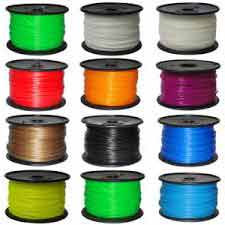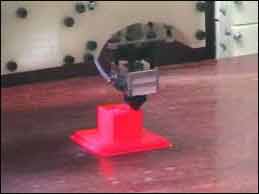
In Johannesburg
Services in Johannesburg
- Cholesterol and You
- Motivational Speaking
- Soweto
- Rubble Removal
- Bee Removals
- Furniture Removals
- Storage on East Rand
- Document Storage
- Photographers
- Photography
- Antiques
- Chocolate Fountain Hire
- Chimney Cleaning in Johannesburg
- Skip Hire
- Debt Wise
- Bookkeeping
- Don't get left in the dark
- World Class City
- 3D Printing
- Accounting
- The Sweet and Snack Expo
- Molex
- Women in Construction
- Vintage Style
- Hydraulics
- Security
- Industry
- Team Building
Products in Johannesburg
Life in Johannesburg
- Your Weekend
- Kyalami Kart Circuit
- Alive and Well in Johannesburg
- Belly-dancing
- Sparrow Village
- Randpark Ridge
- Soweto Tours
- Northcliff
- Ferndale
- Bee Story
- The Battle of the Service Providers
- Johannesburg - West and South
- Building in Johannesburg
- Parkhurst
What does 3D Printing use to print?
Article published on 25 February 2014
Thermoplastics and filament
Thermoplastics, is the common term used to refer to ABS filament and PLA, both of which are used widely in 3D printing.
PLA is a plastic which is derived from renewable resources like sugar cane and various starches. PLA is one of the more frequently used plastics worldwide, especially because of the 'natural' components. It can be applied through injection moulding and extrusion which makes it an ideal product for use in 3D printing.
One draw back of this type of polymer is that is not as heat resistant as it's counterparts, so any cups or containers that are printed from it cannot be used to hold hot liquids. On the plus side the natural ingredients in the composition of PLA make it a favourite for packing food products and it can be composted by a composting plant.
The is an almost sweet oily smell when ABS is being used as a printing material as opposed to the sharp smell of plastic that is given off by melting ABS filament.
ABS filament is one of the more popular and commonly used forms of printing material used in 3D printing. ABS filament is a co-polymer, meaning it is made up of a few different polymers, in this case it is Acrylonitrile, Butadine and Styrene. These polymers are formed into strings of various 'strings'. Each batch is a different colour to facilitate the printing process and a different thickness.
As the printer operates it will need to feed the filament into a chamber in a controlled manner where the filament is heated to melting and then extrude it through the printing nozzle. The ABS filament will cool and solidify quickly, allowing the object to retain it's shape.

How does the printing process work?
Many companies have the specifications for their products or the parts on their website. This information is loaded onto a computer where the program will render a 3 dimensional design. This is known as computer assisted modelling or computer assisted design. This program will interface with the printer, which not only prints from left to right but up and down as well, and guide the printer nozzle through the process.
The filament will be fed into the nozzle at a predetermined rate, based on the thickness and melting point of the filament, and extruded according to the pattern determined by the computer program. The filament will be extruded layer upon layer which then fuse together creating the solid object.
Where would I get the right filament for my 3D printer?
Looking for all the world like reels of the coloured cord you use to trim the edges of your garden, 3D printing relies on the correct printing material to deliver a quality object. You should be able to buy your filament from the same supplier who provided your 3D printer.
Netram technologies are an online supplier of just about anything you could want when it comes to 3D printing technology. They have a large variety of filament in stock. Pay them a visit at http://netram.co.za/
OpenHardware.co.za are also suppliers of anything 3D from filament to programmes and programmers, why not see if they can help you with what you need?